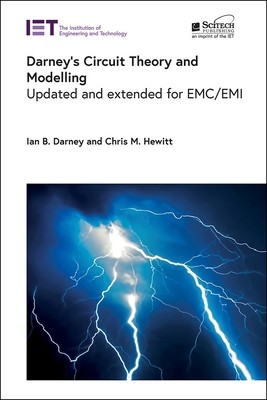
- We will send in 10–14 business days.
- Author: Ian B Darney
- Publisher: SciTech Publishing
- ISBN-10: 1839539534
- ISBN-13: 9781839539534
- Format: 15.6 x 23.4 x 1.9 cm, kieti viršeliai
- Language: English
- SAVE -10% with code: EXTRA
Reviews
Description
The equipotential earth is a fundamental requirement of circuit theory, because it dramatically reduces the complexity of the mathematics required to simulate a circuit. Unfortunately, in the real world, no such equipotential earth exists, nor can it ever do so, which means simulating a circuit to evaluate its electromagnetic compatibility (EMC) and susceptibility to electromagnetic interference (EMI) is largely dependent on using the Maxwell equations. The Maxwell equations are inherently complex, however, and so have high processing power requirements and, as with all complex systems, there is a propensity to generate and magnify errors.
Fortunately, the models provided in this book require far less processing power, as the mathematics required is far less complex than that of the Maxwell equations. These models are explained in a simple and straightforward manner, and can be used at the developmental stage of a project and redeployed in the testing stage before the manufacturing and product deployment stages are implemented.
A review of the relationship of circuit theory with electromagnetic theory identifies a way of augmenting these analytical tools, and this enables circuit models to be developed to simulate all forms of EMI, thus effectively updating and extending circuit theory.
The technique described in this book can be used to analyse all the mechanisms involved in the propagation of EMI. This approach avoids the need for endless debate on the topic of ground philosophy. Equally, it avoids the need to invoke the complexities of electromagnetic computation.
The book is aimed at electrical and electronic design engineers and EMI/EMC design consultants.
EXTRA 10 % discount with code: EXTRA
The promotion ends in 23d.21:18:42
The discount code is valid when purchasing from 10 €. Discounts do not stack.
- Author: Ian B Darney
- Publisher: SciTech Publishing
- ISBN-10: 1839539534
- ISBN-13: 9781839539534
- Format: 15.6 x 23.4 x 1.9 cm, kieti viršeliai
- Language: English English
The equipotential earth is a fundamental requirement of circuit theory, because it dramatically reduces the complexity of the mathematics required to simulate a circuit. Unfortunately, in the real world, no such equipotential earth exists, nor can it ever do so, which means simulating a circuit to evaluate its electromagnetic compatibility (EMC) and susceptibility to electromagnetic interference (EMI) is largely dependent on using the Maxwell equations. The Maxwell equations are inherently complex, however, and so have high processing power requirements and, as with all complex systems, there is a propensity to generate and magnify errors.
Fortunately, the models provided in this book require far less processing power, as the mathematics required is far less complex than that of the Maxwell equations. These models are explained in a simple and straightforward manner, and can be used at the developmental stage of a project and redeployed in the testing stage before the manufacturing and product deployment stages are implemented.
A review of the relationship of circuit theory with electromagnetic theory identifies a way of augmenting these analytical tools, and this enables circuit models to be developed to simulate all forms of EMI, thus effectively updating and extending circuit theory.
The technique described in this book can be used to analyse all the mechanisms involved in the propagation of EMI. This approach avoids the need for endless debate on the topic of ground philosophy. Equally, it avoids the need to invoke the complexities of electromagnetic computation.
The book is aimed at electrical and electronic design engineers and EMI/EMC design consultants.


Reviews